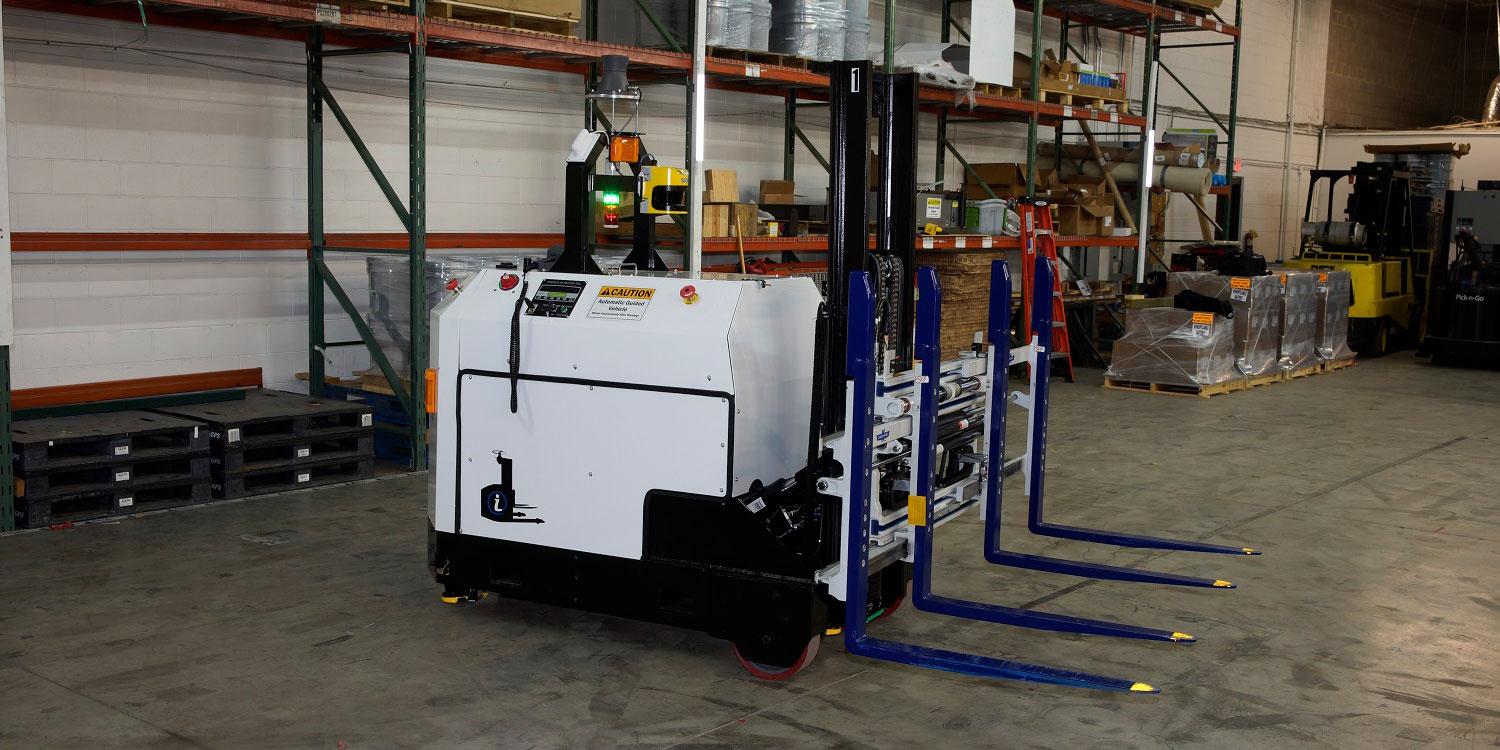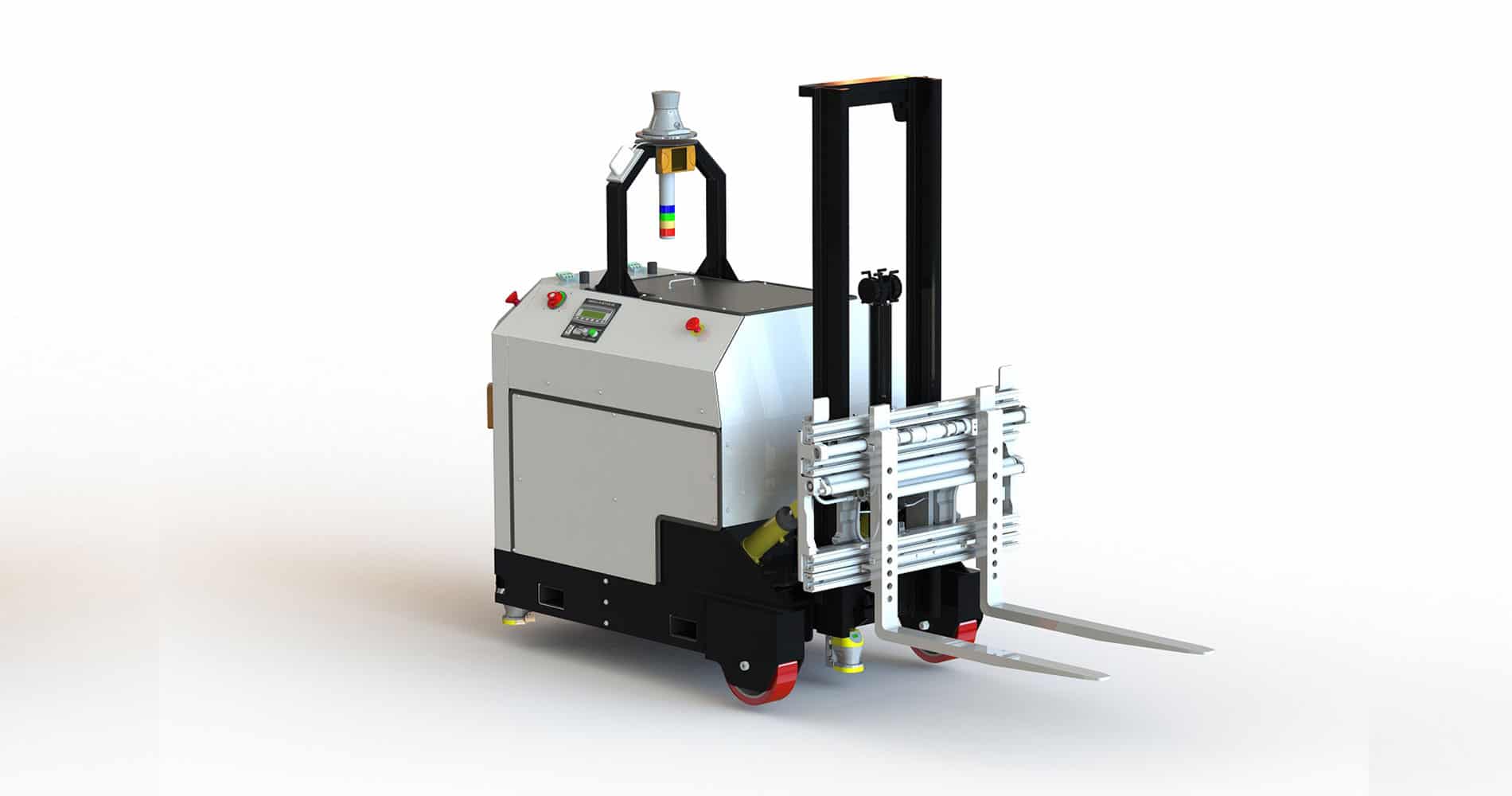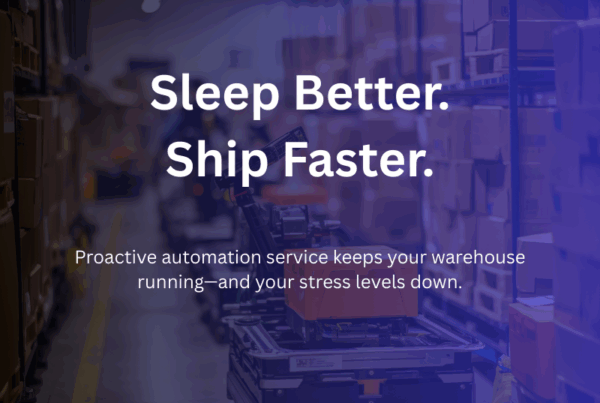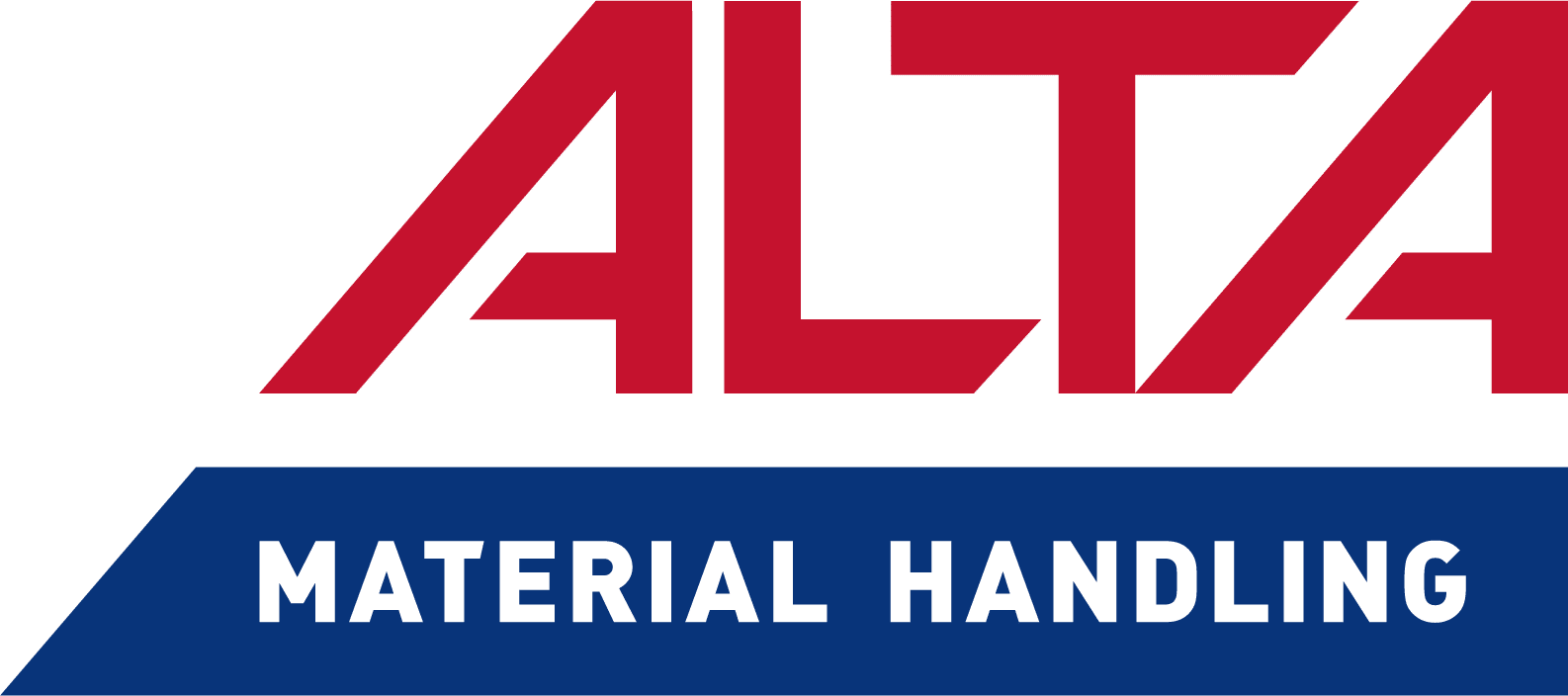Automation in shipping, warehousing, and material handling is popular for good reason – it’s versatile and cost-effective. Automated Guided Vehicles are gaining popularity for the benefits they bring in automated warehouse integrations. We wanted to dive into their potential, so we reached out to Pete Jadwinski, National Sales Manager at America in Motion, a leading supplier of AGV’s since 2007.
Engineering unique solutions with customized AGV’s
Both PeakLogix and America in Motion (AIM) build customized solutions to meet our clients’ unique problems, building systems that are tailored to meet the specific needs of each individual case.
“But there’s good and bad with that,” Jadwinski is quick to explain. “If what is needed is a standard, 3,500 lb. forklift, AIM may be 5-8% more expensive than some of our competitors. And a client can get that standard lift faster by purchasing it pre-built from a supplier.”
However, if something non-standard is needed – for example, a 3,700 lb. forklift – then the only option AIM’s competitors will have is to offer the piece of equipment they stock that exceeds those specs – which might be a 5,000 lb. AGV. “At AIM,” Jadwinski says, “we excel at building that 3,700 lb. AGV that exactly meets the needs of the client. And we’ll do it for less money than that 5,000 lb. lift.”
One of the hidden benefits to this level of customization is found in the parts and tools needed to work with these systems. Because they work with all suppliers, AIM can customize the parts used so their customers can use what they already have in stock or know they can get quickly.
Customizing a maximum ROI
“It never fails,” Jadwinski explains, “that a throughput study will find that what is needed to do a job are 3.1, or 4.2, or 6.15 vehicles. It never comes out to an exact integer.”
While selling a partial vehicle isn’t possible, with some creative engineering, it is possible to adjust how a vehicle is used in a number of ways. Jadwinski details, for example, how batteries can be safely pushed beyond their standard threshold by adjusting their charging rate. If the amperage put into the batteries is higher, the charge time is lower. So charging at 150 amps might require 3.1 vehicles, but changing the charging rate to 175 amps lowers the vehicle count to 2.89. Decreasing the lifespan of a $1,000 battery might save a business the cost of a $110,000 AGV.

Photo credit: America in Motion
And Jadwinski knows other ways of getting the most out of non-integer needs. Another example he shares involves purchasing that extra vehicle. This way, if one AGV goes down, there is virtually no downtime. And that extra AGV is then programmed to do jobs that the client may not have considered, such as grabbing a trash hopper and running a route around the warehouse or sweeping the floor, increasing efficiency by decreasing housekeeping tasks.
What AGV’s are capable of doing is limited only by the creativity of their designers. For Jadwinski, one job that showcased the versatility of AGV’s involved a client who handled very large rolls of paper – on the order of 2-3 tons. “They were getting too many complaints about their product being damaged,” Jadwinski explains, “and wanted us to develop an AGV that could help.”
The engineers at AIM were able to completely automate the loading process, which reduced both damages to the product and risk to the employees.
AIM’s mission: building business partnerships through self-service
One unique aspect of AIM’s business is what happens after the sale. To give their clients the freedom to work with any partner, supplier, or vendor for parts, maintenance, or service, AIM provides them with a copy of the software definitions, documentation, and a list of all the parts used in the system. This gives their clients the flexibility to change the code themselves, purchase spare parts on their own if a better deal is available, and do 100% of their own maintenance.
One training possibility would be that (for example) if a client orders 10 AGV’s or more, AIM can build, test, and commission nine of them in their office. The customer’s maintenance department is invited on-site to build, test, and commission the 10th unit – if they can build that AGV out of parts from a box, then they should be able to maintain it for life.
An industry in growth
The flexibility of AIM’s customization has done more than allow them to fill a niche in the market; it’s also driving their growth. Some of the ‘exact needs’ Jadwinski discusses are very much specialized. Their AGV’s sometimes go where people simply can’t – like foundries with extreme temperatures and caustic exhaust, or chemical curing plants with low-oxygen atmospheres. They also have AGV’s in amusement parks, running wire-guided turret trucks for VNA applications, and interfacing with production machines feeding raw materials.
America in Motion is committed to providing customized solutions to unique problems; to reducing or even eliminating many of the costs associated with labor and human error; and to helping shift labor away from simple or repetitive tasks and into more creative roles. The result? Ongoing efficiency and profitability for the warehouses that employ their AGV’s.





